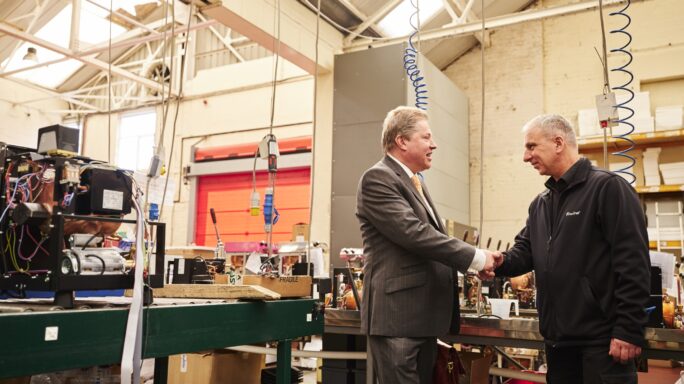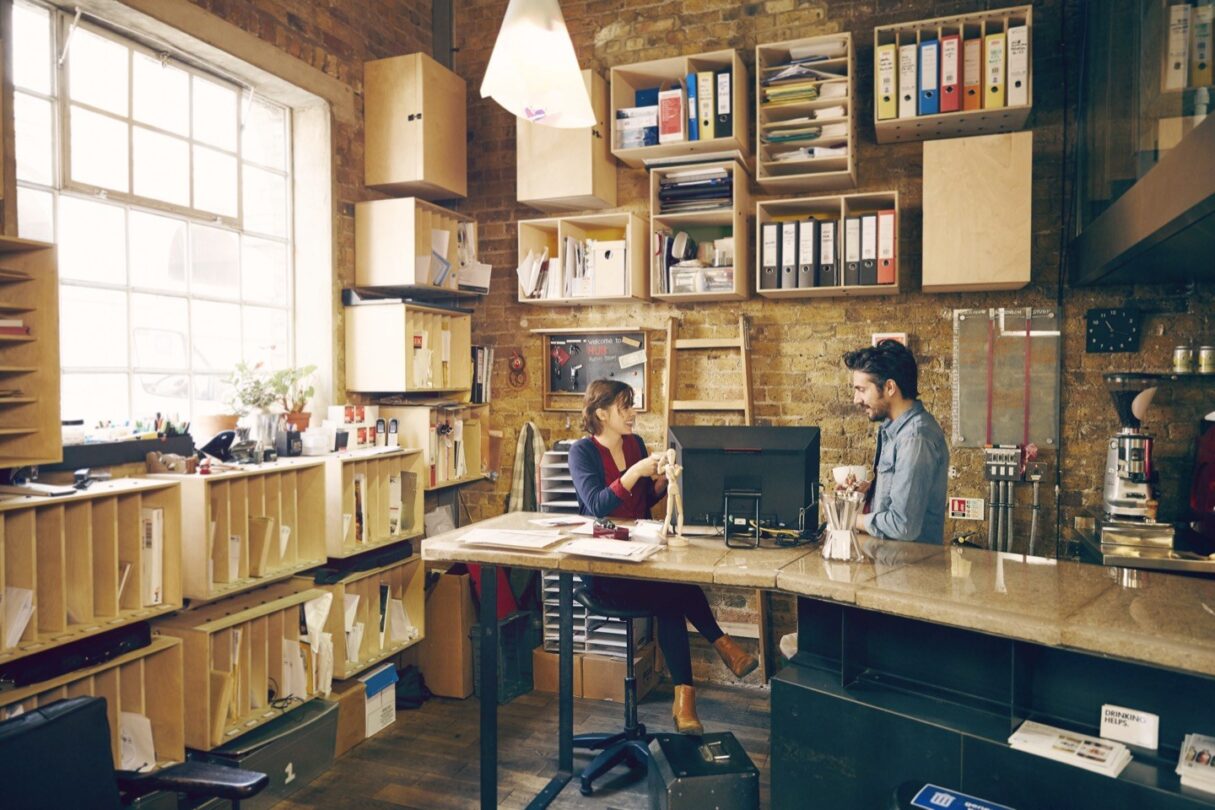Money Matters
How to avoid import and export VAT issues after the Brexit transition period
Brexit is presenting challenges to businesses that import or export from EU countries. One of these is a potential VAT issue. Read this to learn more.

Brexit is going to present many challenges to businesses that import or export from EU countries.
Businesses might be hit with a large and unexpected VAT bill if they don’t ensure all customs documentation is 100% correct following the end of the transition period. I don’t think many have yet realised this.
The government has suggested that VAT will be operated as a reverse charge on the VAT return, which is to say, there should be no money to pay (although it has also cooled a little on this proposal, and we will simply have to wait until the withdrawal negotiations have progressed further to know for sure).
But there could be problems further down the line.
Businesses may have to fundamentally alter how they do business with European Union (EU) companies – including how they arrange shipping of their products – to avoid this trap.
People are mistaken thinking that duty and import/export documentation is the only financial increase they need to worry about when importing/exporting following Brexit.
But duty is typically low for most imports. In the clothing sector, it’s up to around 12%. In the food sector it can be higher than this, and even 100%.
But for most other sectors it’s between 1.7% to 3.7%. Electronics are generally free.
Right now we’re in the Brexit transition period, following the UK’s exit from the EU at the end of January 2020. This lasts until 31 December 2020.
Following this, new rules will apply.
Exporting after the Brexit transition period
Let’s take the example of a UK-based VAT-registered car parts manufacturer, who has previously exported to Europe. Maybe it imports sub-assemblies too, as well as exporting finished goods. Import/export is a two-way picture but both sides mirror each other.
If you were making a sale or an acquisition within the EU before the transition period ended, the fact that you had your customer’s VAT number in Germany was sufficient to send them the items without charging UK VAT. It was nice and straightforward.
You hadn’t involved HMRC other than on your VAT return. You’d made a declaration for your EC Sales List to say: “I’ve sold some items outside the UK and it went to these guys.”
And you also did your Intrastat return. The EC Sales List and the Intrastat should balance.
Now, what happens when the transition period ends? Well, we don’t know details yet, despite the fact it’s only months away. But what’s almost certain is that you as a business will have to account for the VAT – both here in the UK and in the destination country.
Once the transition period ends, we fall outside of the simplification mentioned above.
In our examples here, we’ll assume the VAT reverse charge does indeed apply, which is all the information we have from the government right now.
Two things might happen depending on how the goods are shipped. If you’re making a sale to a German customer and you make the export yourself, you have to raise the export documentation.
You can still zero-rate that supply because you’ve got evidence to demonstrate that the goods have left the UK for the EU.
However, what happens if your German customer says: “Actually, I’ll pick them up from your premises. I’ve got an HGV that’s doing a circuit in the UK and picking up goods from a number of my suppliers.”
This is referred to as Ex Works. In the motor industry, it’s very common, as well as in other industries.
Theoretically, you’re still OK. You raise a VAT invoice on the goods. But your German customer has to furnish you on-demand with proof of export to Germany or, better still, as an ongoing measure. If they send you the proof of export, you can still zero rate that supply.
But what if you can’t get that proof of export on demand?
Maybe you’ve fallen out of favour with the German customer, or they went bust. Maybe you’re no longer in touch with your shipping agent and, when you enquire, they tell you that they’re not taking on any extra business.
Maybe a year or two later, HMRC comes knocking at your door and does an audit. They see this export you made and say: “Where’s the proof of export on these shipments?”
If you can’t furnish it, then you will be hit with the VAT that you haven’t paid – 20% of the cost of the invoice.
You may be thinking that this sounds unlikely. In just this kind of circumstance, I dealt with a case where a company was billed £11m in VAT for exports for which they couldn’t produce documentation.
Scale your business internationally
Want to trade internationally? We’re here to help you succeed with the latest technology, research and tips to expand your business.

Importing after the Brexit transition period
On the import side, let’s assume you’re buying sub-assemblies from Germany too, to continue our example above.
At the moment, your German supplier might be shipping it and dropping it at your door. Or you may be picking it up from them Ex Works.
Once the transition period ends (and if you are an Ex Works purchaser), you have to potentially register for German VAT because that business in Germany will be making a supply of goods and they will have to invoice you in Germany.
It could be that they do a similar arrangement to the above in the exporting example, whereby they say: “OK, you furnish me with the proof of export and I’ll live with that.”
But that requires a lot of trust, and is by no means guaranteed.
So, you buy your goods in Germany, then pay the VAT there. You become a serial recoverer of German VAT. That means you’re depositing money in Germany on an ongoing basis.
And if you’re buying goods from Spain, France and so on, then you potentially have to register in all of those countries, and both pay and recover VAT on an ongoing basis. How’s that going to affect your cash flow?
Let’s return to the example of Germany and look at the other costs.
Whoever is responsible for the export will have to pay a broker, unless they’ve got access to the German export declaration system, which is unlikely for most UK businesses. The export document is, therefore, going to cost you €30, €40, or maybe even €50.
If you’re in the food sector, you might have to pay even more for things such as phytosanitary certificates.
Getting back to our original example, the export document is raised, and you get a movement reference number (MRN), or a master reference number, depending on what you want to call it.
This is like a barcode in a supermarket. The lorry travels to the Calais port, the official scans the MRN into the system, and now the EU knows that those goods have gone.
But now you’ve got to make an import into the UK. We have the transition period up to the end of 2020. At the end of that, you will need import documents for the UK too. So, when the transition ends, further documents will be required, and will probably come with the same price attached – £30, £40 or £50 per declaration.
Theoretically, there will be port charges eventually.
If you’re coming through the Eurostar or Dover, they probably are not going to apply because the ports have no part in handling those goods. If they came through Felixstowe or another port, where containerised shipping is used, then you always get port charges.
Advice for import and export after the Brexit withdrawal period
The worst thing is for your goods get stopped at the border. Your logistics provider will say, well, my vehicle can’t move and it’s your fault. And they’ll apply an hourly charge that you might not have been prepared for.
You should ensure import and export for your business is dealt with by somebody who knows what they’re doing.
For instance, there’s something called Customs Freight Simplified Procedures (CFSP). This allows a very minimal amount of information to be presented to customs on import – basically, who you are and your authorisation number. It gets your goods in and then you report on them subsequently.
So, you’re never going to get held up at the border with CFSP.
But to get CFSP, your business needs to invest time. It needs to be demonstrated that the people who are going to administer it are competent.
You have to have a competency in customs. The UK Customs Academy, which is paid for by HMRC, can help.
Recently the potentially free funding has been once again expanded, so you should make use of it. There are other organisations that do courses as well. There’s everything from online courses for the very basic, up to master’s degree level.
And for anyone who is doing imports and exports in the future, there’s a Level 3 course – a certificate in customs compliance. It’s completed online.
The cost of the course is £980 but you get a full refund from HMRC for the rest of 2020. It’s certainly been the case that the money set aside by the government for this has been nowhere spent each time.
So, with changes afoot now the UK has left the EU, it’s even more imperative that people get to know what they’re doing. And so through the course of 2020, people should get members of their staff or themselves trained on that course.
If the business is a big enough importer and exporter, then use CFSP. If you’re not, then get yourselves a broker sooner rather than later.
There’s a shortage in brokers. Companies such as ours aren’t taking them on until they’re needed, and we still don’t know the specifics of how Brexit will work, but we do have firm plans in place.
The small business guide to import and export
Deciding whether to trade abroad is a big decision for any small business. Learn what you need to do take the leap and discover how importing and exporting can benefit your company.







Ask the author a question or share your advice